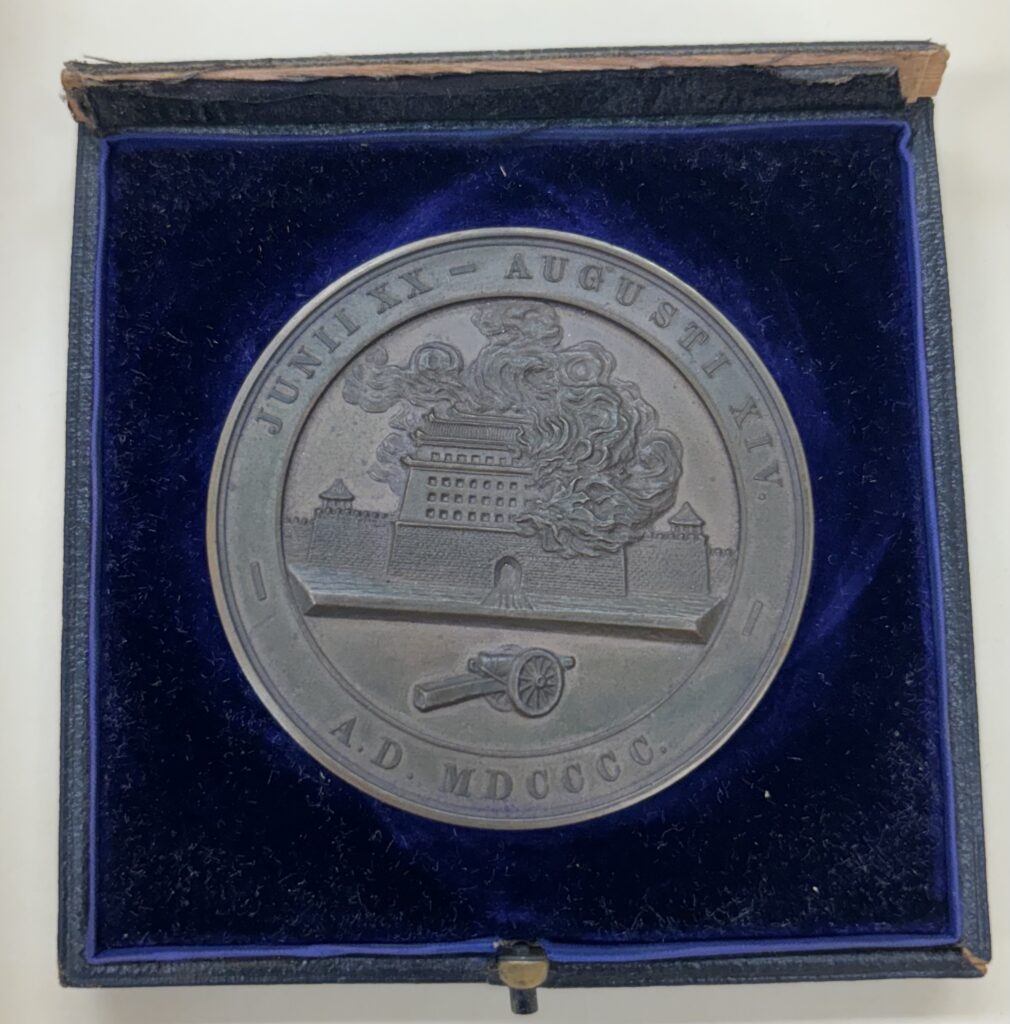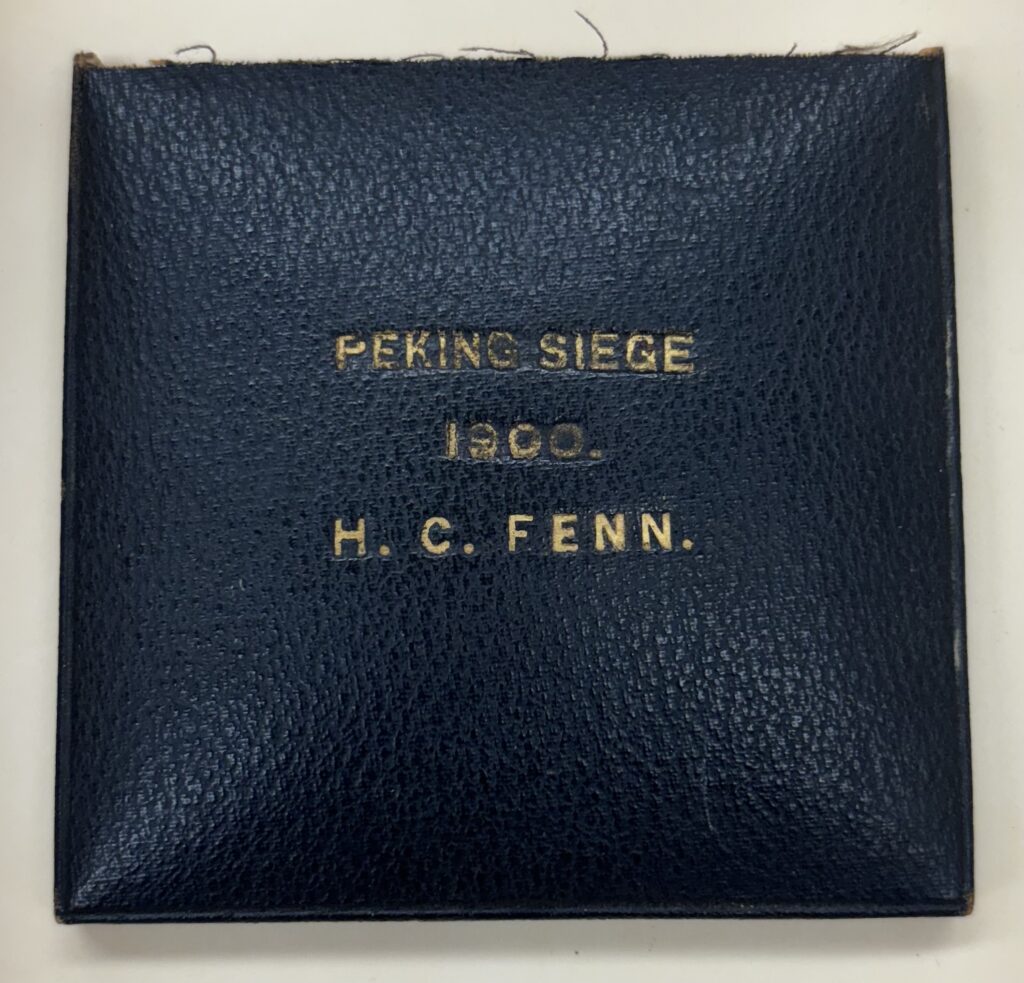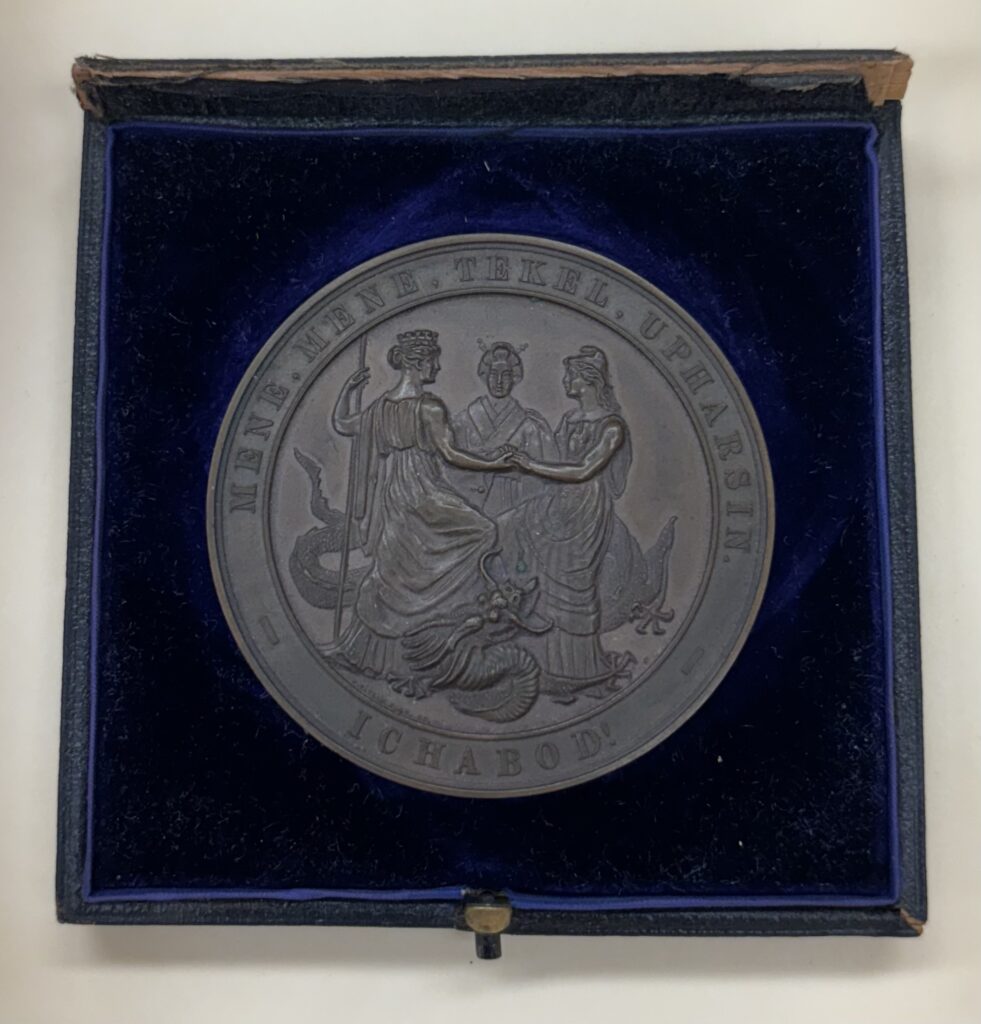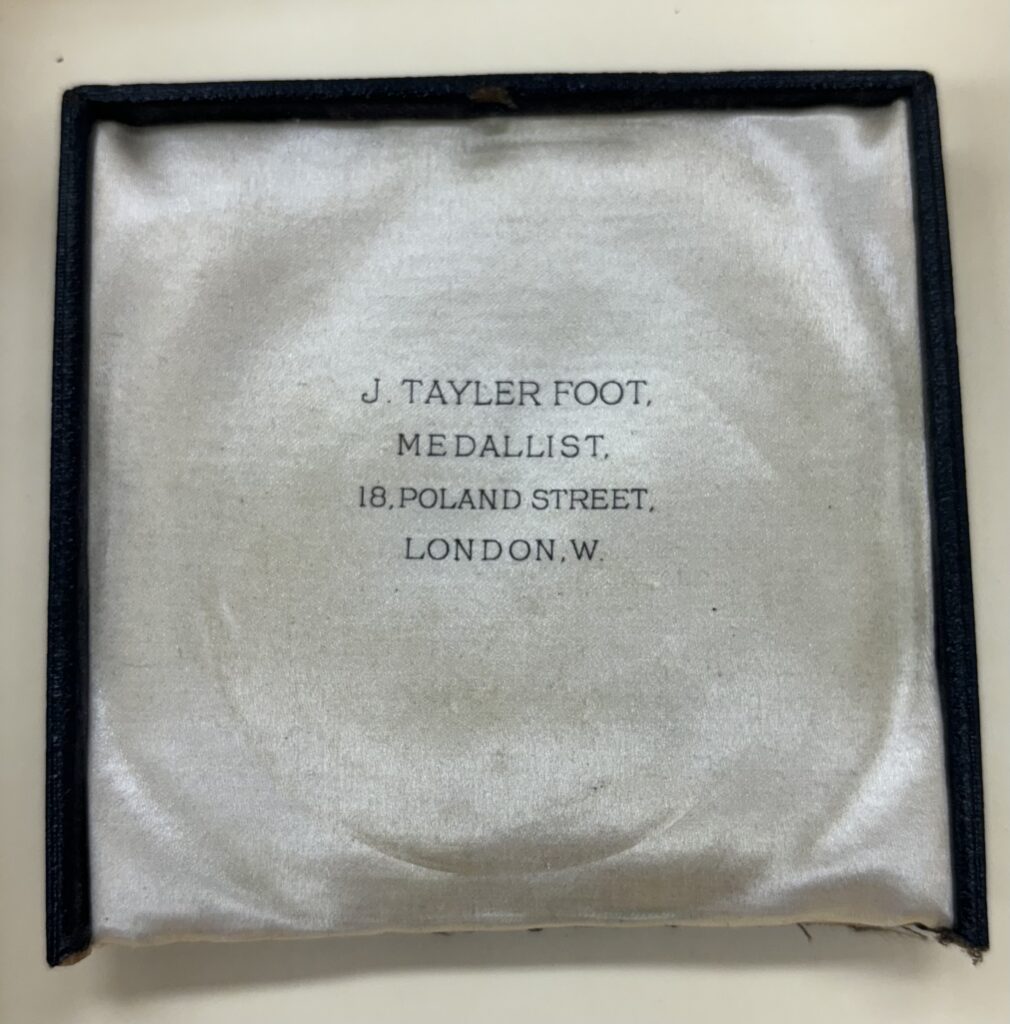Siege Medallion
Henry received a medallion for his participation in the Siege, even though he was only six years old at the time1. This medallion, and others, were commissioned by Arthur D. Brent, who was also present at the Siege. Reports say that the medallions were made out of bronze from one of the cannons used during the siege. In Henry’s autobiography he talks about one the cannons, named Betsy, that the missionaries in the legations used1. Although it is possible that this cannon was used to create these medallions it seems unlikely. In order for this to be true, Brent would have had to gain access to the cannon after the Siege ended, but he and everyone else who was in the legations were rescued by military forces and taken to the United States, thus it would have been next to impossible for him to gain access to Betsy, or any other cannon.
The front side of the medallion depicts the Chen-Mien gates, the gates to Peking, engulfed in flames with a cannon below. The back side depicts Germania, Britancia and a Chinese individual standing over a dragon2.
The passage on the reverse side of the medallion comes from Book of Daniel in the Bible, which the Prophet David translated to mean “Thou art weighed in the balances, and art found wanting”2, which is an ominous message and does not fit with in context on the medallion.
There are still many questions surrounding this medallion, including why it was given to Henry, when was it actually presented to him, and why the inscription on the back of the medallion was chosen.
Below are images of the medallion and its case.




References:
- Fenn Collection. College of East Asian Studies, Wesleyan University.
American Numismatic Association. The Numismatist. (July, 1951).